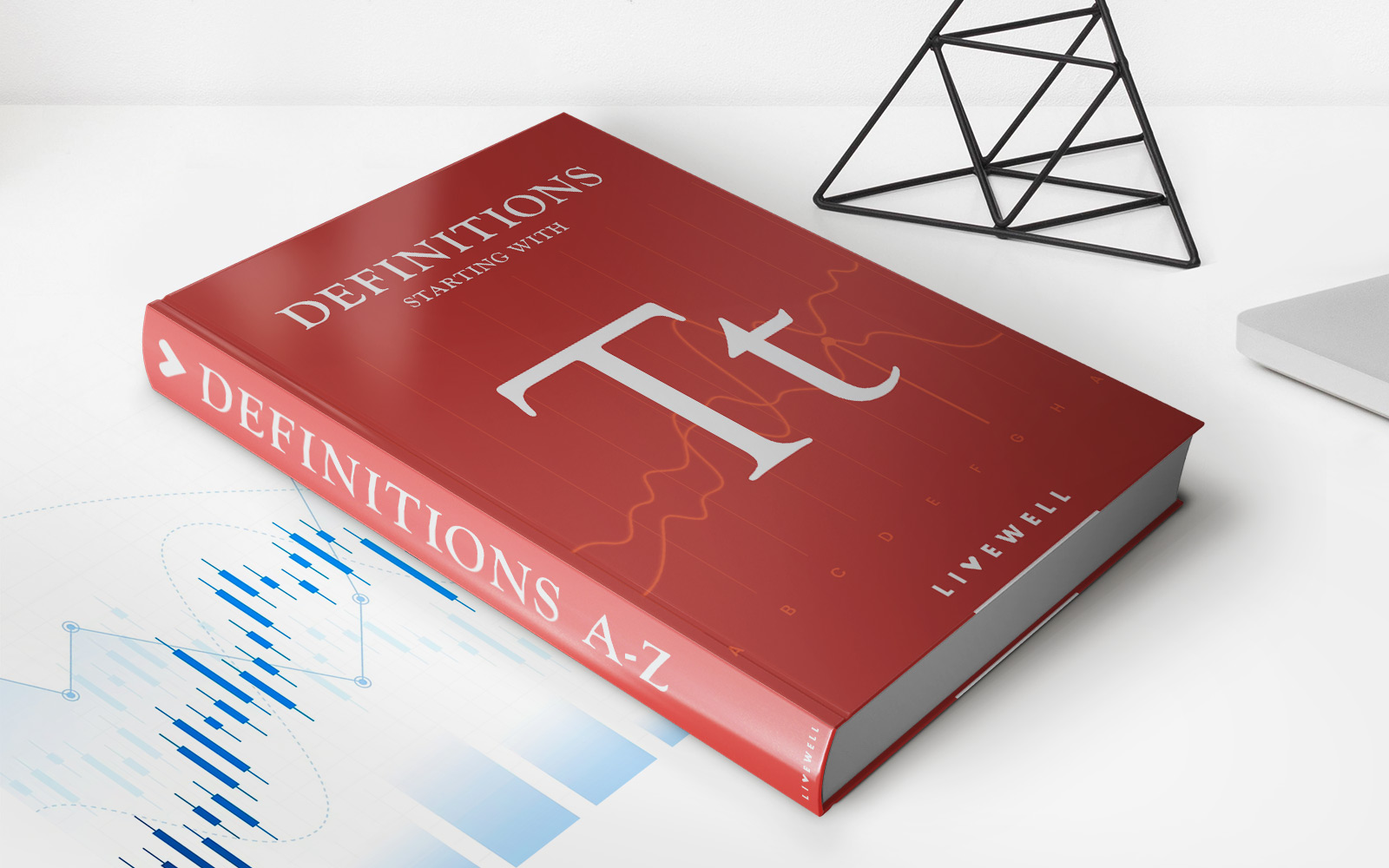

Finance
What Is Transfer Price In Accounting
Published: October 7, 2023
Transfer price in accounting refers to the price at which goods or services are transferred between divisions or entities within a company. Learn more about this important financial concept in our comprehensive guide on finance.
(Many of the links in this article redirect to a specific reviewed product. Your purchase of these products through affiliate links helps to generate commission for LiveWell, at no extra cost. Learn more)
Table of Contents
- Introduction
- Definition of Transfer Price in Accounting
- Importance of Transfer Price in Accounting
- Methods of Determining Transfer Price
- Transfer Pricing Regulations and Standards
- Challenges in Implementing Transfer Pricing
- Transfer Pricing Documentation and Compliance
- Transfer Pricing Case Studies
- Conclusion
Introduction
Transfer pricing is a crucial concept in accounting that helps multinational companies determine the price at which they transfer goods, services, or intangible assets between affiliated entities within different tax jurisdictions. It involves setting a fair and reasonable price to ensure that each entity within the organization earns a fair profit and to comply with tax regulations.
Transfer pricing plays a significant role in financial reporting, tax planning, and overall company performance. It has gained increased attention from tax authorities and regulatory bodies worldwide due to its potential impact on tax revenues and the potential for tax avoidance. As a result, multinational enterprises (MNEs) are required to carefully consider transfer pricing arrangements and comply with relevant regulations to avoid penalties and reputational risks.
Transfer pricing can be complex, as it involves determining the value of goods or services in an international business environment. Various factors, such as market conditions, competition, and the uniqueness of the products or services being transferred, influence the determination of transfer prices.
This article aims to provide a comprehensive understanding of transfer pricing in accounting, including its definition, importance, methods of determination, regulations and standards, challenges, documentation requirements, and real-life case studies to illustrate its practical application.
Understanding transfer pricing is essential for finance professionals, tax practitioners, and business owners operating in a global economy. By accurately pricing intercompany transactions, companies can mitigate transfer pricing risks, maintain compliance with tax regulations, avoid double taxation, and optimize their tax liabilities within legal frameworks.
Next, we will explore the definition of transfer price in accounting and its significance in managing multinational enterprise operations.
Definition of Transfer Price in Accounting
In the realm of accounting, transfer price refers to the price at which goods, services, or intangible assets are exchanged between affiliated entities within a multinational enterprise. It represents the value assigned to such intercompany transactions for accounting, tax, and financial reporting purposes.
Transfer pricing helps determine how the profits and costs are allocated among the affiliated entities and plays a crucial role in assessing the financial performance of each entity within the organization. It is important to note that transfer prices should be set at arm’s length, meaning they should reflect the price that would be negotiated between unrelated parties in a comparable transaction.
The concept of transfer pricing arises due to the nature of multinational companies operating in multiple countries. Each country has its own tax laws and regulations, and the determination of transfer prices affects the taxable income and tax liabilities of the entities involved. Consequently, transfer pricing has implications for tax planning, risk management, and compliance with tax regulations.
The key objective of transfer pricing in accounting is to allocate profits and costs fairly among the different entities within the multinational enterprise, taking into consideration the functions performed, risks assumed, and assets employed by each entity. This ensures that each entity receives a fair compensation for its contribution to the overall business operations.
Transfer prices are typically determined based on one of the following methods:
- Comparable Uncontrolled Price (CUP) Method: This method relies on comparing the price charged in an intercompany transaction with the price charged in a similar transaction between unrelated parties.
- Cost Plus Method: This method involves adding a reasonable profit markup to the costs incurred by the supplying entity to produce or provide the goods or services.
- Resale Price Method: This method determines the transfer price based on the resale price of the product or service, reduced by an appropriate gross profit margin.
- Profit Split Method: This method allocates the combined profits of the entities involved based on the relative contributions made by each entity to the overall value creation.
- Transactional Net Margin Method (TNMM): This method compares the net profit margin derived from an intercompany transaction with the net profit margin realized in comparable transactions involving unrelated parties.
It is essential to select the most appropriate transfer pricing method based on the nature of the transaction and the availability of reliable and comparable data. The chosen method should result in a reasonable allocation of profits, consistent with market conditions and the functions performed by each entity.
Next, we will explore the importance of transfer pricing in accounting and its impact on multinational enterprise operations.
Importance of Transfer Price in Accounting
The determination of transfer prices holds significant importance in accounting for multinational enterprises (MNEs) due to the following reasons:
- Profit Allocation: Transfer pricing allows for the fair allocation of profits between affiliated entities. By setting transfer prices at arm’s length, it ensures that each entity is appropriately compensated for its contribution to the creation of value within the organization. This enables accurate financial reporting and performance evaluation at both the entity and group levels.
- Tax Compliance and Planning: Transfer pricing is a critical aspect of tax planning for MNEs. By setting transfer prices that comply with tax regulations and reflect the economic substance of the transactions, companies can mitigate the risk of tax audits, penalties, and double taxation. It also enables them to optimize their tax liabilities by allocating profits to entities domiciled in jurisdictions with favorable tax regimes.
- Transfer Pricing Documentation: Many countries require MNEs to maintain detailed transfer pricing documentation that supports the arm’s length nature of their intercompany transactions. This documentation helps justify the chosen transfer pricing method, demonstrate compliance with tax regulations, and manage the risk of tax authority scrutiny. Adequate transfer pricing documentation is crucial in defending the company’s transfer pricing practices and avoiding costly disputes.
- Operational Decision Making: Transfer pricing impacts several operational decisions within a multinational organization. Effective transfer pricing can incentivize entities to optimize their performance, allocate resources efficiently, and encourage knowledge-sharing and innovation across borders. It also aids in determining the profitability of specific product lines, business segments, or geographic locations, enabling management to make informed decisions about investments, expansions, or divestments.
- Global Transfer Pricing Compliance: The importance of transfer pricing extends beyond the internal operations of MNEs. Many countries have implemented transfer pricing regulations and standards based on the OECD Transfer Pricing Guidelines. Compliance with these regulations is essential to maintain a good standing with tax authorities worldwide and avoid reputational risks associated with aggressive tax planning or non-compliance.
Overall, transfer pricing in accounting is fundamental to ensure transparency, fairness, and compliance in the allocation of profits and costs within MNEs. By adhering to transfer pricing principles, companies can accurately assess their financial performance, comply with tax regulations, manage tax risks, and make informed strategic decisions to drive sustainable growth.
Next, we will explore the various methods used for determining transfer prices in accounting.
Methods of Determining Transfer Price
There are several methods that can be used to determine transfer prices within multinational enterprises. The selection of the appropriate method depends on the nature of the transaction, availability of data, and compliance with relevant tax regulations. Below are some commonly used methods:
- Comparable Uncontrolled Price (CUP) Method: This method compares the price charged in an intercompany transaction with the price charged in a similar transaction between unrelated parties. It requires finding comparable transactions to establish an arm’s length price. The CUP method is considered the most reliable if there are comparable transactions available.
- Cost Plus Method: This method involves adding a reasonable profit markup to the costs incurred by the supplying entity to produce or provide the goods or services. The markup should be consistent with the level of risk assumed and the functions performed by the entity. The costs can be direct costs, such as materials and labor, as well as indirect costs, such as overhead expenses.
- Resale Price Method: The resale price method determines the transfer price based on the resale price of the product or service, reduced by an appropriate gross profit margin. This method is commonly used when the entity receiving the goods or services functions primarily as a distributor or reseller.
- Profit Split Method: The profit split method allocates the combined profits of the entities involved based on the relative contributions made by each entity to the overall value creation. This method is suitable for situations where each entity contributes unique and valuable intangible assets, performs significant functions, or assumes substantial risks.
- Transactional Net Margin Method (TNMM): The TNMM compares the net profit margin derived from an intercompany transaction with the net profit margin realized in comparable transactions involving unrelated parties. It requires the identification of comparable companies engaged in similar business activities to determine an arm’s length range of profit margins. The TNMM is the most commonly used method when analyzing routine transactions.
It’s important to note that the choice of the transfer pricing method should be based on a thorough analysis of the transaction and the availability of reliable and accurate data. In some cases, a combination of methods may be used to determine transfer prices for different types of transactions within the same multinational enterprise.
In addition to these methods, some countries have specific rules or guidelines for certain industries or types of transactions. For example, the pharmaceutical industry may have specific transfer pricing methodologies, while the licensing of intellectual property may require a different approach.
Transfer pricing methods should align with the arm’s length principle and reflect the economic realities of the transaction. It is crucial for companies to document and justify their transfer pricing decisions, ensuring compliance with tax regulations and minimizing the risk of disputes with tax authorities.
Next, we will explore transfer pricing regulations and standards that govern intercompany transactions.
Transfer Pricing Regulations and Standards
Transfer pricing regulations and standards have been implemented by tax authorities and international organizations to ensure fairness, transparency, and compliance in intercompany transactions. These regulations aim to prevent tax avoidance and the erosion of tax bases across different jurisdictions. The following are key transfer pricing regulations and standards:
- OECD Transfer Pricing Guidelines: The Organisation for Economic Co-operation and Development (OECD) has developed comprehensive guidelines that provide a framework for determining arm’s length transfer prices. These guidelines are widely recognized and used by tax authorities and multinational enterprises worldwide. They cover various aspects of transfer pricing, including functional analysis, comparability analysis, and the selection and application of appropriate transfer pricing methods.
- Country-Specific Transfer Pricing Rules: Many countries have their own transfer pricing regulations that are based on the OECD Transfer Pricing Guidelines but might include additional requirements or specific provisions. These rules outline the documentation requirements, transfer pricing methods acceptable in each jurisdiction, and penalties for non-compliance. The regulations also provide guidance on the use of advance pricing agreements (APAs) and dispute resolution mechanisms.
- Base Erosion and Profit Shifting (BEPS) Actions: The OECD’s BEPS project addresses concerns regarding the fairness and effectiveness of international tax rules. It aims to prevent tax planning strategies that exploit gaps and mismatches in tax rules to shift profits to low-tax jurisdictions. BEPS Actions specifically target transfer pricing and introduce various measures to ensure that transfer prices are aligned with value creation and economic substance.
- Advance Pricing Agreements (APAs): APAs are agreements between taxpayers and tax authorities that determine the transfer pricing methodology and pricing for future intercompany transactions. APAs provide certainty and reduce the risk of transfer pricing disputes by enabling taxpayers to obtain approval and agreement from tax authorities before entering into transactions. They help eliminate ambiguity and provide a clear framework for transfer pricing compliance.
- Country-by-Country Reporting (CbCR): CbCR is a reporting requirement introduced by the OECD as part of the BEPS project. It requires multinational enterprises to provide detailed information on their global allocation of income, taxes paid, and other key measures of economic activity. This reporting enables tax authorities to assess transfer pricing risks and identify potential cases of profit shifting or tax avoidance.
Compliance with transfer pricing regulations and standards is crucial for multinational enterprises to avoid penalties, reputational risks, and double taxation. Companies should establish robust transfer pricing policies, maintain accurate documentation, and ensure that their intercompany transactions are conducted in line with the arm’s length principle and relevant regulations in each jurisdiction.
Next, we will explore the challenges faced by companies in implementing transfer pricing practices.
Challenges in Implementing Transfer Pricing
The implementation of transfer pricing practices poses significant challenges for multinational enterprises (MNEs) due to the complexity of international transactions, varying tax regulations across jurisdictions, and the potential for disputes with tax authorities. Some of the key challenges in implementing transfer pricing are:
- Setting Arm’s Length Prices: Determining the appropriate transfer prices that conform to the arm’s length principle can be challenging. Companies need to analyze the functions performed, risks assumed, and assets employed by each affiliated entity to ensure a fair allocation of profits. The lack of reliable comparable data and the uniqueness of certain products or services further complicate the process of setting arm’s length prices.
- Comparability Analysis: Conducting a thorough comparability analysis involves identifying and selecting truly comparable transactions or entities to benchmark transfer prices. This requires detailed analysis of industry trends, transaction terms, economic conditions, and other relevant factors. Obtaining accurate and comprehensive data for comparability analysis can be a time-consuming and costly endeavor for MNEs.
- Transfer Pricing Documentation: Many jurisdictions require detailed transfer pricing documentation to support the arm’s length nature of intercompany transactions. This documentation must demonstrate the selection of the appropriate transfer pricing method, analysis of comparability factors, and justification of the chosen transfer prices. Maintaining extensive and compliant documentation can be burdensome and requires continuous monitoring and updates.
- Dispute Resolution: Transfer pricing disputes with tax authorities can arise due to differences in interpretations of transfer pricing rules, methodologies, or the outcomes of comparability analyses. Resolving these disputes can be time-consuming, costly, and potentially disruptive to the business operations of MNEs. It may involve lengthy negotiations, mutual agreement procedures, or even litigation in certain cases.
- Complex Intercompany Transactions: MNEs engage in a wide range of complex transactions, including the transfer of intangible assets, centralized procurement, cost-sharing agreements, and intercompany services. Determining the appropriate transfer prices for these transactions requires specialized knowledge, expertise, and an understanding of the specific industry dynamics and regulatory requirements.
- Changing Regulatory Landscape: Transfer pricing regulations and standards are subject to frequent updates and changes. MNEs must stay abreast of these changes to ensure compliance with evolving requirements. Keeping up with the changing regulatory landscape requires a proactive approach, strong internal controls, and effective communication across different business units and jurisdictions.
Despite these challenges, implementing sound transfer pricing practices is crucial for MNEs to mitigate tax risks, ensure compliance, and maintain a favorable relationship with tax authorities. Proactive management of these challenges, including professional advice, robust documentation, and regular monitoring, can help companies navigate the complex transfer pricing landscape effectively.
Next, we will explore the importance of transfer pricing documentation and compliance for multinational enterprises.
Transfer Pricing Documentation and Compliance
Transfer pricing documentation is a critical component of ensuring compliance with transfer pricing regulations and demonstrating the arm’s length nature of intercompany transactions. Adequate documentation provides transparency, reduces the risk of disputes, and helps multinational enterprises (MNEs) manage their transfer pricing risks effectively.
The documentation requirements vary across jurisdictions, but generally, they include information and analysis related to the following:
- Business Overview: This section provides an overview of the MNE’s business operations, organizational structure, and key functions performed by each affiliated entity involved in intercompany transactions. It includes a description of the industry, market conditions, and the value chain analysis.
- Transfer Pricing Methodology: MNEs must document the transfer pricing method selected for each type of intercompany transaction. This includes a detailed explanation of why the chosen method is appropriate, taking into consideration the functions performed, risks assumed, and assets employed by each entity. Comparability analysis should also be included to demonstrate the arm’s length nature of the transfer prices.
- Functional Analysis: This section analyzes the functions, assets, and risks of each affiliated entity involved in the intercompany transactions. It identifies the key contributions made by each entity to the creation of value within the organization and justifies the allocation of profits accordingly. It also considers the economic substance of the transactions and the entity’s ability to assume risks and perform functions.
- Comparable Data: MNEs must identify and analyze comparable transactions or companies to support the arm’s length nature of their transfer prices. This includes a search for reliable data sources, selection criteria for comparables, and appropriate adjustments to ensure comparability. The availability and reliability of comparable data can be a challenge, and MNEs should document their efforts in obtaining and using such data.
- Financial Analysis: This section includes a financial analysis of the entities involved in the intercompany transactions, including information on their profitability, return on investment, and other relevant financial metrics. The analysis helps demonstrate the consistency of the transfer prices with the overall financial performance and industry benchmarks.
- Risk Assessment: Transfer pricing documentation should assess and document the transfer pricing risks faced by the MNE. This includes a discussion of potential economic, legal, and reputational risks related to transfer pricing, as well as the MNE’s risk management strategies and policies.
- Advance Pricing Agreements (APAs) and Dispute Resolution: If the MNE has entered into APAs or has been involved in transfer pricing disputes, this section should incorporate relevant information and agreements reached with tax authorities. It outlines the procedures and mechanisms for resolving disputes and demonstrates the MNE’s commitment to compliance and dispute resolution.
Compliance with transfer pricing documentation requirements is essential to demonstrate the MNE’s commitment to transparency and compliance with tax regulations. Failure to maintain adequate documentation can result in penalties, fines, and tax audits. It can also lead to reputational damage and strained relationships with tax authorities.
In addition to documentation, MNEs should establish robust internal controls and policies to ensure ongoing compliance with transfer pricing regulations. This includes regular review and monitoring of intercompany transactions, updating transfer pricing policies as needed, and training employees involved in transfer pricing activities.
Next, we will explore real-life case studies to illustrate the practical application of transfer pricing in accounting.
Transfer Pricing Case Studies
Examining real-life case studies can provide valuable insights into the practical application of transfer pricing in accounting. Let’s explore two notable examples:
- Apple Inc.: Apple Inc. faced scrutiny from tax authorities regarding its transfer pricing practices related to its intellectual property. Apple had established subsidiaries in low-tax jurisdictions, such as Ireland, where the intellectual property rights were held. The company’s transfer pricing strategy involved allocating a significant portion of its profits to these subsidiaries for the use of intellectual property. The tax authorities argued that the transfer prices were not aligned with the economic value created and challenged the allocation of profits. After a lengthy legal battle and investigation, Apple agreed to pay a substantial amount in taxes and adjusted its transfer pricing arrangements. This case highlights the importance of adequately demonstrating the value created by intellectual property and ensuring that transfer prices align with the economic substance of the transactions.
- GlaxoSmithKline (GSK): The pharmaceutical industry has faced challenges related to transfer pricing due to the unique nature of its products and extensive research and development activities. In 2019, GSK was involved in a transfer pricing dispute with the UK tax authorities. The company was accused of using transfer pricing to shift profits to low-tax jurisdictions. The dispute centered around the pricing of intercompany transactions, specifically the supply of prescription drugs from a Swiss subsidiary to the UK entity. After an intense investigation and negotiations, GSK reached an agreement with the tax authorities, resulting in a settlement. This case highlights the importance of conducting a thorough comparability analysis and justifying transfer prices in the pharmaceutical industry, where the pricing of unique products and intellectual property rights is crucial.
These case studies demonstrate the complexities and challenges involved in transfer pricing and the close scrutiny that tax authorities place on MNEs. Multinational companies must carefully analyze and document their transfer pricing arrangements, ensure alignment with the arm’s length principle, and be prepared to defend their practices when faced with audits or disputes.
Companies can learn from these cases by implementing robust transfer pricing policies, conducting detailed functional and comparability analyses, and engaging in proactive dialogue with tax authorities to minimize the risk of disputes and achieve a fair and compliant transfer pricing structure.
Next, we will conclude the article by summarizing the key points discussed.
Conclusion
In conclusion, transfer pricing is a crucial concept in accounting for multinational enterprises (MNEs) that involves determining the price at which goods, services, or intangible assets are transferred between affiliated entities. It plays a significant role in financial reporting, tax planning, and overall company performance.
The importance of transfer pricing lies in its ability to allocate profits and costs fairly among entities, comply with tax regulations, and facilitate informed decision-making. It helps MNEs optimize their tax liabilities, mitigate transfer pricing risks, and maintain compliance with the arm’s length principle.
Various methods are used to determine transfer prices, including the Comparable Uncontrolled Price (CUP) method, Cost Plus method, Resale Price method, Profit Split method, and Transactional Net Margin method (TNMM). The selection of the appropriate method depends on the nature of the transaction and the availability of reliable data.
Transfer pricing regulations and standards, such as the OECD Transfer Pricing Guidelines, country-specific rules, and BEPS Actions, govern intercompany transactions and ensure compliance with tax authorities worldwide. MNEs must maintain proper transfer pricing documentation to support their pricing decisions and demonstrate compliance with tax regulations.
Implementing transfer pricing practices comes with challenges, including setting arm’s length prices, conducting comparability analysis, managing transfer pricing documentation, resolving disputes, and navigating complex intercompany transactions. Overcoming these challenges requires expertise, proactive management, and continuous monitoring of transfer pricing practices.
Real-life case studies, such as Apple Inc. and GlaxoSmithKline, highlight the importance of accurately justifying transfer prices and addressing unique industry dynamics to avoid disputes with tax authorities.
In summary, multinational enterprises must carefully navigate the complexities of transfer pricing to ensure transparency, fairness, and compliance. By implementing robust transfer pricing policies, maintaining accurate documentation, and staying up to date with applicable regulations, companies can mitigate risks, optimize their tax positions, and drive sustainable growth in a global economy.














